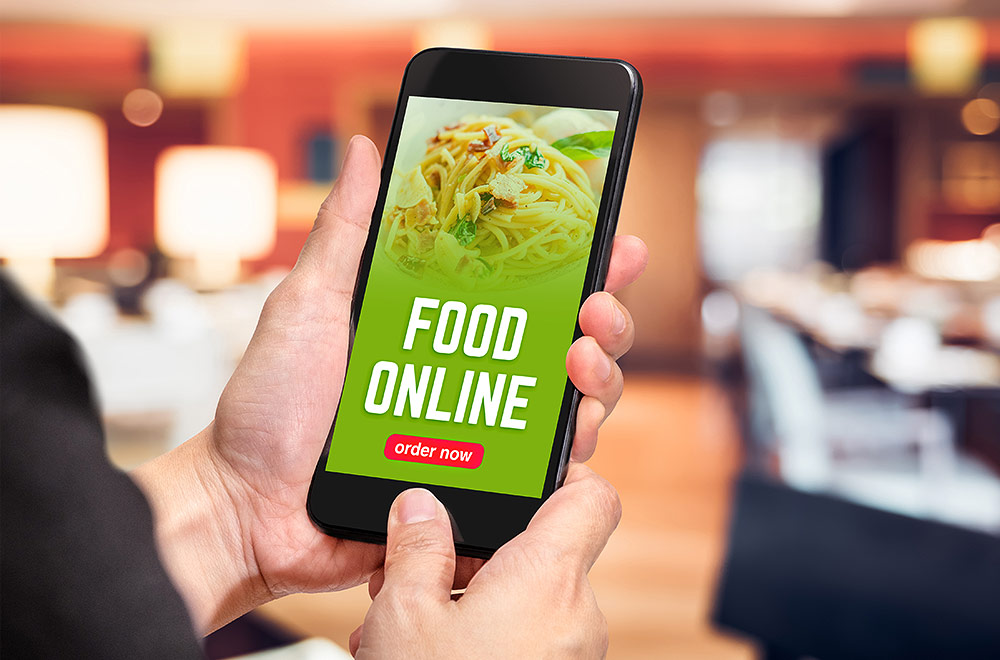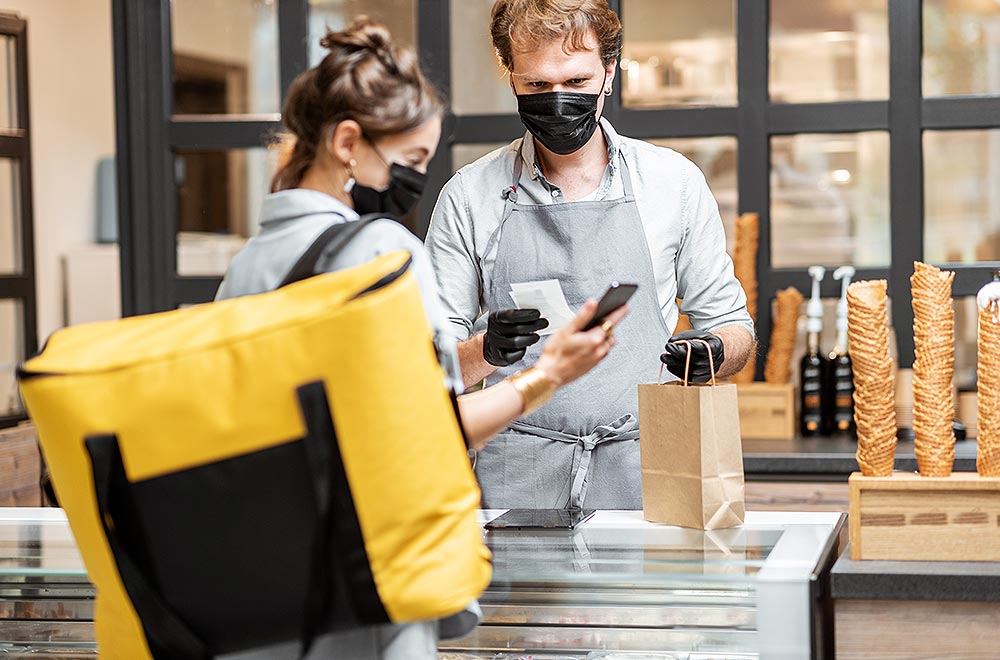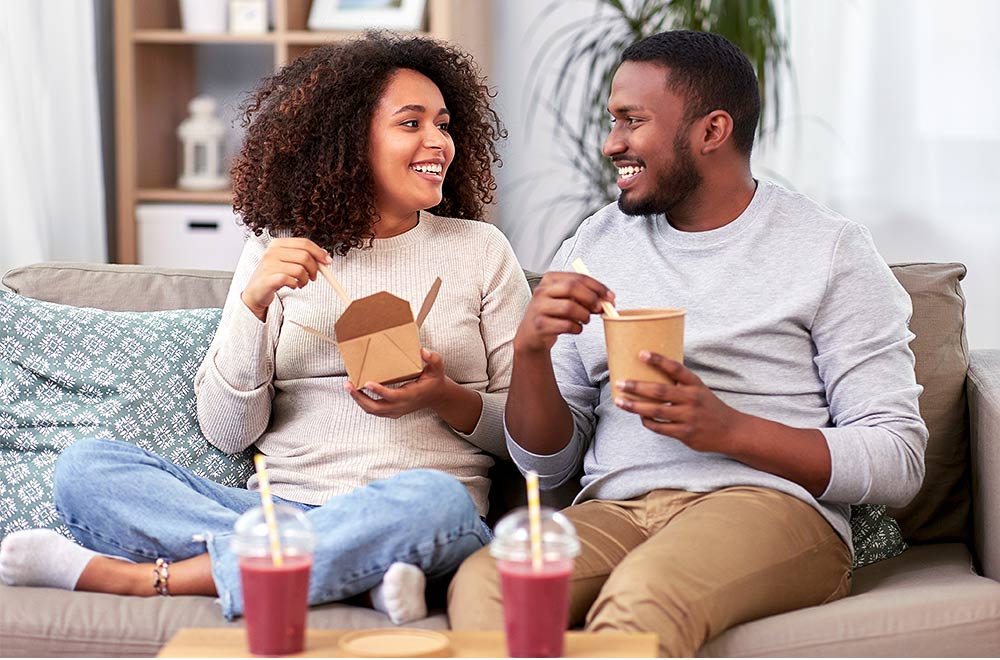It’s no secret that consumers nowadays are living in an age where technology has made them accustomed to getting exactly what they want, when they want it. This is especially true when it comes to ordering food delivery from a restaurant, which is something customers are doing more often during the coronavirus pandemic. In fact, in a recent Rewards Network survey 48% of consumers say they plan to dine out less this fall/winter than previous years with more than half of survey respondents claiming they’ll order delivery more than usual this fall/winter. This trend makes it crucial for restaurant owners to have an effective delivery service in place, otherwise you may be missing out on a large chunk of revenue and new loyal customers.
Third-party vs. in house
It can oftentimes be difficult and overwhelming to decide between using a third-party delivery service app or managing the entire process in house. While placement on third-party takeout/delivery apps can give your restaurant more exposure, it also comes at a price, as some of the companies charge up to 30% commission fees per order to the restaurant. In addition, if a customer has a poor delivery experience, they will most likely blame the restaurant even if the transaction was handled by a third party.
On the other hand, managing deliveries in house gives restaurant owners more control over the customer service and quality control experience. Most importantly, 100% of revenue goes directly to the restaurant instead of third-party companies. You’re also able to completely own the customer experience from beginning to end while capturing valuable consumer data and insights along the way. COVID-19 has highlighted how the restaurant industry can shift literally overnight, so by establishing a profitable in-house delivery service now, you can better protect your business against another potential major downturn in the future.
The below charts serve to further illustrate the revenue discrepancies between using third-party apps versus an in-house delivery service.
| Item | Third-party costs | |
|---|---|---|
| Average order value | $30 | $40 |
| Marketing commission | $6 | $8 |
| Delivery commission | $3 | $4 |
| Processing fee | $1.22 | $1.52 |
| Total commission/fees | $10.22 | $13.52 |
| Gross profit | $19.78 | $26.48 |
| Margin | 66% | 66% |
- Total commission is roughly 30%, split between marketing and delivery
- Processing fee is 3.05% + $0.30
- Fees grow with increased order value since they’re based on percentages
| Item | In-house costs | |
|---|---|---|
| Average order value | $30 | $40 |
| Delivery driver per hour | $10 | $10 |
| 3 deliveries per hour | $3.33 | $3.33 |
| Online order system per month | $130 | $130 |
| 100 orders per month | $1.30 | $1.30 |
| CC processing fee | $1 | $1 |
| Total costs to you | $5.6 | $5.73 |
| Gross profit | $24.37 | $34.27 |
| Margin | 81% | 86% |
| Adding a delivery fee | ||
| Delivery fee | $3 | $3 |
| Gross profit w/ fee | $27.37 | $37.27 |
| Margin w/ fee | 91% | 93% |
- More than three deliveries per hour once ramped up
- Your restaurant’s processing fee is lower than third parties
- Your fees stay constant with increased order value
It’s clear that setting up a successful in-house delivery service is the most profitable option in the long run for restaurants. Of course, it will take a bit of work to ramp up, but once it’s set up and running smoothly all of the revenue generated funnels back into the business. We’ll discuss the key components to consider in your quest to create your own in-house delivery service, allowing your off-premise business to be poised for success from the start.

Enable your website to take orders
The first step in setting up your own delivery service is to add online ordering capabilities to your current website. It’s very important to ensure that this new ordering experience works just as well on desktop as it does on mobile devices, since it’s estimated that mobile orders make up 11% of all quick-service restaurant sales in 2020. If you do not have web capabilities in house, consider hiring a third-party such as Zuppler for this component. Then, be sure that the entire process is fully integrated into your current POS system, set up confirmation/update emails, and designate your delivery parameters (fees, radius, etc.). If necessary you can look into hiring a dispatch system such as Shipday or Onfleet to assist your restaurant in optimizing its routes, tracking delivery drivers, and more.
Create a delivery menu
Once your website is optimized to accept online ordering, you can establish a delivery-specific online menu. Oftentimes referred to as a minimum viable menu (MVM), this menu can feature the best sellers on your standard menu that you know will travel well throughout the delivery process. Evaluate which of your menu items are generating the most revenue with the least overhead cost and then determine if they are a contender to endure the delivery process (restaurant kitchen, to carry-out containers, to delivery driver’s car/bike, to customer’s home). Utilize your POS system’s data to certify that the items you choose are popular among your customers and still accurately reflect your brand. You can also test out seasonal food and drink items as well as meal kits for takeout/delivery to gather intel on what options your customer base responds to best. It’s also a good idea to feature short descriptions and photos of each item on your menu and to make sure it’s regularly updated to account for any changes.
Determine delivery driver options
Now that the logistics of your delivery ordering experience are in place, it’s time to evaluate your options for delivery drivers. Hiring full-time delivery drivers is always an option — restaurants can post a job description on their social media sites as well as typical job board sites. It’s a good idea to request a motor vehicle report and proof of personal auto insurance during these interviews. Another great option is to utilize your current employees as part-time delivery drivers. Analyze which positions are being underutilized on your staff and reach out to see if they’re interested in taking on extra hours as a delivery driver for your business. Equip your drivers with hot/cold bags for food and any other elements they may need to ensure an excellent delivery experience for the customer. It’s also important to reorganize your restaurant space a bit in order to accommodate for an influx of off-premise orders. This can include delegating space for order fulfillment, storage for delivery equipment, and delivery driver parking. By accounting for all of these elements early on, you’re more likely to have a seamless order experience for both your staff and the customers.

Train your staff
A crucial component of having a successful off-premise dining model is guaranteeing the food is of the same quality compared to dine-in service. Your staff is at the epicenter of this process, so it’s important that they are trained correctly upon being hired on the intricacies of your restaurant’s in-house takeout/delivery service. Creating a training manual and running all-staff training sessions can be helpful for your employees to clearly understand the expectations surrounding takeout/delivery orders. Tailor training sessions for each position so that the back-of-house staff can focus on learning the ordering system, efficiencies on the line, and proper to-go container packing, while the front-of-house workers can understand how to take to-go orders and assist the back of house by adding additional items to bags. Sense360 found that 63% of consumers prefer to order delivery directly from the restaurant, versus 18% who prefer third parties. With so many takeout/delivery options, one poor experience can lead patrons away from your doors and through someone else’s. Investing in your staff and your off-premise dining now can allow you to possibly see increased revenue and productivity in the future.
Get the word out
Your website is your most powerful marketing tool. Use it to promote your new online ordering platform by showcasing your takeout/delivery capabilities front and center on your homepage with a call-to-action (CTA) button that links to your online ordering page/menu. Especially during coronavirus, customers want to know right away when they land on your website if you offer takeout/delivery options and how they can order. To further encourage orders directly from your website (versus a third party) you can test out featuring a promo code on your website that is exclusive to online orders for first-time users. Your restaurant’s social media pages — Facebook, Instagram, Twitter, etc. — are ideal avenues for spurring brand awareness, engagement, and to-go orders. Also, it’s important to note that Gen Z and Millennials are 99% more likely to rely on social media and online reviews when compared to Gen X and Boomers. Social media also allows patrons to learn quickly of any updates, safety protocols, hours of operation changes, and menu edits associated with COVID-19.
You can also tap into all of your digital and print collateral to announce and promote your restaurant’s new takeout/delivery functionality. Beginning with emails, send a mass e-blast out to everyone in your email database to let them know about your new and improved online ordering webpage. You can also include a special promo code that is only sent to those on your email list, that way you can evaluate down the line how many of those recipients converted into online delivery customers. Finally, don’t be nervous to be direct with your customers, helping them to understand the benefit of ordering directly from a restaurant versus a third-party app. The pandemic has made many consumers more aware of the strain that third-party apps place on restaurants, so it’s a good idea to highlight the fact that more money will go into their pocket and the restaurant’s pocket when they order directly from an establishment. This type of awareness and messaging can prompt your current customer base to support local businesses instead of large delivery service corporations.
View a recording of our webinar, “Launch your own delivery service,” for a more in-depth look.
We conducted this survey of members of AAdvantage DiningSM, Caesars Rewards Dining, Rapid Rewards Dining , and MileagePlus DiningSM for approximately one week in early September. Members of AAdvantage DiningSM and MileagePlus Dining were awarded bonus miles for answering the survey questions honestly and completely. All of the information contained in this article summarizing the survey results is provided for informational purposes only and should not be construed as providing tax, legal, accounting, career, or other professional advice.






